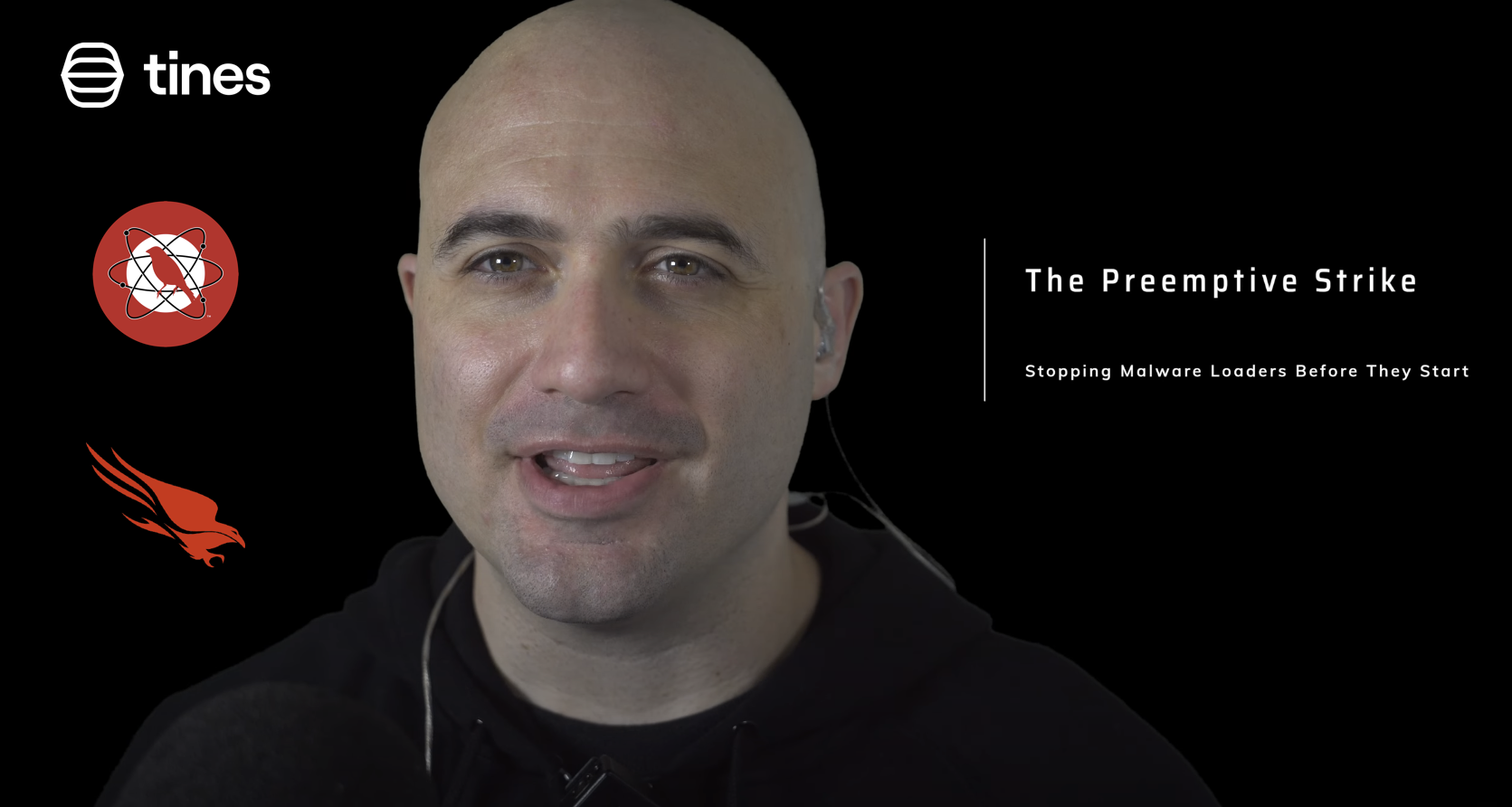Case Study - The Preemptive Strike: Episode 1
Abstract/Executive Summary:In this first episode of The Preemptive Strike series, we explore automated defenses, focusing on HiJackLoader malware, the MITRE ATT&CK framework, and practical implementation of security automation. The session demonstrates how to leverage modern security tools and frameworks to build robust defensive capabilities and validate them through real-world simulations.
Transcript:Good morning cybersecurity professionals, enthusiasts, and all those in between! I'm Chris Callas, and today, we're diving deep into the world of automated defenses covering several critical areas.
We'll examine HiJackLoader, a sophisticated malware loader that acts as a modular tool enabling delivery of additional payloads and capabilities. We'll then discuss the MITRE ATT&CK framework and how to leverage it for counter adversary operations, ensuring our organization can identify and respond to emerging threats.
We'll also explore The Tines Automation Capability Matrix and its role in implementing automation into security operations. Finally, we'll conduct a practical stress test of our controls by simulating adversary behavior using Atomic Red Team, Crowdstrike, Tines, and Jira to respond to suspected behavior, demonstrating our security program's systematic, risk-based approach.
Understanding HiJackLoader
At the heart of a growing number of attacks lies the malware loader, such as HijackLoader. Their primary function is to load and execute malicious payloads without detection. This first-stage payload loader aims to establish an undetected foothold to support the delivery of the adversaries' desired payloads.
HijackLoader's architecture allows for effortless integration of new features and includes various dynamic anti-analysis techniques. It represents a new breed of advanced threats where adversaries have adopted DevOps methodologies, equipped with real-time update capabilities that can easily circumvent modern security controls.
Key Attributes of HijackLoader:
- • Initiates operations by executing a modified Windows C Runtime function
- • Downloads and decrypts encrypted configuration blocks that vary between samples
- • Employs anti-analysis countermeasures including dynamic Windows API functions and custom API hashing
- • Implements persistence through LNK files in Windows %AppData% and random environment variables
- • Adapts behavior based on detected endpoint protection solutions
MITRE ATT&CK Framework Implementation
The MITRE ATT&CK framework serves as our playbook for understanding and addressing adversarial behaviors. It's a globally accessible knowledge base of adversary tactics and techniques based on real-world observations. Using ATT&CK, we can simulate adversary actions, such as HijackLoader, to test our defenses, understand potential vulnerabilities, and tailor our responses more effectively.
Security Stack Overview
CrowdStrike Integration
CrowdStrike's Falcon platform serves as a cornerstone in our cybersecurity defense arsenal, excelling in real-time threat detection and mitigation. It leverages next-gen antivirus, endpoint detection and response, and 24/7 threat hunting services. When threats like malware loaders are detected, the information is instantly analyzed, providing insights for swift response.
Slack & Jira Implementation
We utilize Slack for ChatOps, implementing a collaboration model that connects people, tools, processes, and automation into a transparent workflow. Jira serves as our single source of truth for tracking cybersecurity alerts and events, crucial for SOC operations where multiple analysts and engineers across different specialties and shifts interact.
Tines Automation
Tines enables us to codify processes, allowing for iteration and improvement over time rather than repetitive manual processes. The Tines Automation Capability Matrix helps security teams proactively respond to common cybersecurity incidents and build muscle memory for critical events.
Atomic Red Team Implementation
We leverage Atomic Red Team, a library from RedCanary containing tests mapped to MITRE ATT&CK. These portable tests enable security teams to reproduce threats and test their security controls effectively. The framework provides a practical approach to validating security measures against real-world scenarios.
Conclusions:Understanding malware loaders, leveraging insights from the MITRE ATT&CK framework, and employing powerful tools like CrowdStrike are fundamental steps in our cybersecurity journey. Each component plays a vital role in our overarching strategy to detect, analyze, and neutralize threats before they can execute their malicious intent.

Christopher Callas
Christopher is the Principal at Arbure Inc., leading strategic and technical initiatives that shape the firm's cybersecurity consulting services. With over a decade of experience, he has built a reputation for delivering tailored security solutions that align with business objectives while addressing modern threats. His expertise spans cloud security, compliance, and risk management, guiding organizations through complex regulatory landscapes and securing multi-cloud environments.
